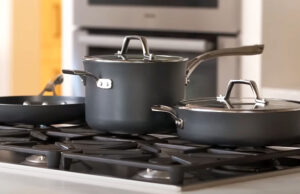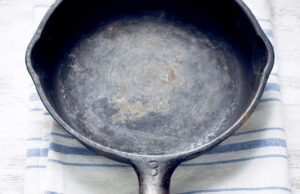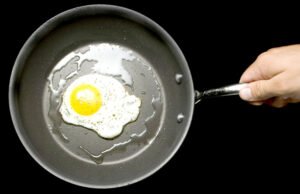As an Amazon Associate, I earn from qualifying purchases at no extra cost to you.
Kenmore Dishwasher Troubleshooting: 6 Fixes That Really Work
If your Kenmore dishwasher is giving you trouble, it can be super frustrating. I’ve been there, staring at dirty dishes and wondering what went wrong. In this article, I’ll show you exactly how to troubleshoot your Kenmore dishwasher with clear, simple methods. You’ll learn how to fix common problems fast and save time and stress.
Check Power and Controls
Sometimes the simplest problem is the easiest to overlook. First, make sure your dishwasher is plugged in properly. Check the outlet by plugging in another appliance. If that works, the problem might be inside the dishwasher.
Next, look at the control panel. A stuck button or error light can stop the machine from running. Reset the dishwasher by turning it off, unplugging it for a few minutes, and then powering it back on.
Check the door latch carefully. If the door isn’t closed tightly, the dishwasher will not start. Even a small misalignment can stop the cycle. Make sure nothing is blocking the latch or preventing it from locking. Sometimes debris or soap residue can make the latch sticky. Clean it with a damp cloth and test the door again.
Look for blinking lights or codes on the display. Kenmore dishwashers use error codes to tell you what is wrong. Consult your user manual for the meaning of each code.
For example, a water supply issue might show a specific code. If you notice any unusual lights or sounds, take notes and compare them with your manual. It helps you decide if you need a professional.
Always check the circuit breaker if the dishwasher is not getting power. A tripped breaker or blown fuse can stop the dishwasher completely. Flip the switch off and on again, and try running the dishwasher. If it starts, the problem is likely electrical. If not, you may need to call an electrician.
- Make sure the dishwasher is plugged in
- Check the control panel and buttons
- Inspect and clean the door latch
- Look for error codes on the display
- Check the circuit breaker
Inspect Water Supply
A dishwasher needs water to work. First, check if the water valve under your sink is fully open. Sometimes, it gets accidentally turned off. If the water supply is on, look at the hose connecting the valve to the dishwasher. Make sure it’s not kinked or damaged. A blocked or twisted hose can stop water from entering the dishwasher.
Next, clean the filter at the bottom of the dishwasher. Food particles can clog it, reducing water flow. Remove the filter carefully and rinse it under warm water. If it’s very dirty, soak it for a few minutes. Make sure to put it back correctly. A loose filter can also cause leaks or poor cleaning.
Check the water inlet valve if water still does not flow. This valve controls water going into the dishwasher. If it is broken, you might hear unusual sounds or see an empty dishwasher after a full cycle. Testing it may require a multimeter. Replace it if it does not open when the dishwasher is on.
Finally, look at water temperature. Kenmore dishwashers need hot water to clean effectively. Run the hot water in your sink for a few minutes before starting the dishwasher. If the water is cold, dishes won’t get clean. Adjust your water heater or run a cycle with hotter water.
- Ensure the water valve is open
- Check hoses for kinks or damage
- Clean the dishwasher filter
- Inspect the water inlet valve
- Verify hot water supply
Clean Spray Arms and Interior
Dirty spray arms can cause dishes to stay dirty. Remove the spray arms and inspect them closely. Look for food particles or hard water buildup. Use a toothpick or small brush to unclog tiny holes. Rinse them under warm water to remove debris. Rotate the arms by hand to make sure they spin freely.
Also, clean the inside of the dishwasher. Wipe down walls and edges to remove soap scum and residue. Check for buildup around the bottom where water collects. Sometimes, grime can block water from reaching all areas. A vinegar rinse or dishwasher cleaner can help remove tough deposits.
Check the filter again while cleaning the interior. Even a small piece of food can prevent proper drainage. Make sure the filter is seated correctly when you finish cleaning. This step helps improve both cleaning performance and longevity of the dishwasher.
Inspect the drain and sump area. A clogged drain prevents water from circulating and may leave dishes wet. Remove any visible debris and rinse the area. Make sure nothing is blocking the path for water. After cleaning, run a short cycle to test.
- Remove and clean spray arms
- Wipe down the interior walls
- Clean and reseat the filter
- Inspect and clear the drain
- Test with a short cycle
Test Drainage System
A dishwasher that doesn’t drain properly will leave dirty, wet dishes. First, check the drain hose under the sink. Make sure it is not kinked or clogged. Sometimes, debris can block the hose, preventing water from flowing out. Detach it and rinse with water if needed.
Inspect the air gap if your sink has one. It prevents backflow but can get clogged. Remove the cover and clean any food particles or buildup. A blocked air gap can cause water to stay in the dishwasher. After cleaning, run a cycle and see if water drains normally.
Check the drain pump. It pushes water out during the cycle. If you hear a humming sound but water doesn’t move, the pump may be stuck or broken. Remove any debris blocking it. If cleaning doesn’t work, the pump may need replacement.
Finally, test the dishwasher with an empty cycle. Watch how water moves and drains. Make sure no unusual noises or leaks appear. This helps confirm that the drainage system is working correctly. Catching small issues early can save bigger repairs later.
- Check and unclog drain hose
- Clean the air gap
- Inspect the drain pump
- Remove debris from the sump
- Test an empty cycle
Examine Detergent and Rinse Aid
Dishwashers need the right soap and rinse aid. Using old or wrong detergent can cause poor cleaning. Always use dishwasher-specific detergent. Avoid regular dish soap because it can create foam and overflow. Measure detergent carefully. Too much or too little can affect performance.
Check the detergent dispenser. Make sure it opens during the cycle. If it’s stuck, dishes won’t get soap. Clean any residue around the lid and hinge. Test the dispenser by running a short cycle with no dishes. Watch it open and release detergent properly.
Rinse aid helps dishes dry and prevents spots. Check the rinse aid compartment. Fill it if it’s low and adjust the settings if needed. This small step improves results significantly. Using the right amount can make your dishes sparkle.
Consider water hardness. Hard water can leave spots even with detergent and rinse aid. Install a water softener if needed or use a rinse aid designed for hard water. This makes cleaning easier and protects your dishwasher from buildup.
- Use proper dishwasher detergent
- Measure detergent carefully
- Clean and test the dispenser
- Fill and adjust rinse aid
- Consider water hardness
Monitor for Leaks and Noise
Leaks and strange noises indicate bigger problems. First, check hoses and connections for water. Even a small drip can damage flooring or cabinets. Tighten connections and replace damaged hoses immediately. Regular inspection prevents costly repairs.
Inspect the door gasket. A torn or dirty gasket can let water escape. Wipe it clean and look for cracks. Replace the gasket if needed. It ensures the door seals properly every time.
Pay attention to unusual sounds. Grinding, buzzing, or knocking may indicate something stuck inside. Check the spray arms, pump, and motor. Remove any debris carefully. If noise continues, it may signal a worn-out part.
Keep an eye on leaks during cycles. Run a short test with a towel underneath. Watch for dripping or pooling water. Catching leaks early helps prevent big water damage. Regular monitoring is key to dishwasher longevity.
- Check hoses and connections
- Inspect and clean door gasket
- Listen for unusual noises
- Remove debris from moving parts
- Test for leaks during a cycle
Final Thoughts
Troubleshooting a Kenmore dishwasher does not have to be hard. By checking power, water, cleaning spray arms, drainage, detergent, and leaks, you can fix most problems at home. These simple steps save time, money, and frustration. Following this guide carefully ensures your dishwasher works smoothly for years. Don’t ignore small issues—they often become big problems.
| Issue | Quick Fix | Tools Needed | Notes |
|---|---|---|---|
| No power | Check plug, breaker, control panel | None | Reset dishwasher if needed |
| No water | Open valve, inspect hose, filter | Wrench, cloth | Hot water improves cleaning |
| Dirty dishes | Clean spray arms, interior, filter | Brush, water | Use vinegar for tough buildup |
| Poor drainage | Check hose, air gap, pump | Screwdriver, water | Remove debris, test with empty cycle |
| Soap not dispensing | Clean dispenser, use correct detergent | Cloth, detergent | Measure detergent properly |
| Leaks or noise | Inspect hoses, gasket, moving parts | Cloth, wrench | Tighten connections, replace damaged parts |
Frequently Asked Questions (FAQs)
Is it normal for my Kenmore dishwasher to make noise?
Yes, some noise is normal, like water spraying or motor running. However, grinding, buzzing, or knocking sounds may indicate a problem. Check for debris in spray arms, pump, or filter. Tighten loose parts and run a short cycle. Persistent noise could mean a worn motor or pump, which might need professional repair.
Can I use regular dish soap in my dishwasher?
No, regular dish soap creates too much foam, which can overflow and damage your dishwasher. Always use detergent labeled for dishwashers. Measure carefully, as too much can leave residue, and too little won’t clean dishes properly. Using proper detergent ensures better cleaning and protects the machine.
Do I need to run hot water before starting the dishwasher?
Yes, hot water helps clean dishes effectively. Run your sink water until it’s hot before starting the dishwasher. Cold water may leave spots or fail to dissolve detergent. Preheating water ensures better cleaning and saves energy during the cycle.
Is it necessary to clean the spray arms regularly?
Yes, cleaning spray arms removes food and hard water buildup. Clogged spray arms prevent water from reaching dishes. Remove them, clear holes with a brush or toothpick, and rinse under water. Doing this regularly improves cleaning and extends the dishwasher’s life.
Can a clogged drain hose stop the dishwasher completely?
Yes, a blocked or kinked drain hose prevents water from leaving the dishwasher. Remove the hose and rinse it under water. Check for bends or debris. Cleaning the hose solves drainage problems and prevents leaks.
Do I need rinse aid every time I run the dishwasher?
Rinse aid is not strictly necessary but highly recommended. It helps dishes dry and prevents spots. Fill the compartment and adjust settings according to water hardness. Using rinse aid regularly improves results, especially in areas with hard water.
Is a leaking dishwasher a serious issue?
Yes, leaks can damage flooring or cabinets. Inspect hoses, door gasket, and connections regularly. Tighten or replace damaged parts immediately. Catching leaks early prevents costly repairs and water damage.
Can I troubleshoot the water inlet valve myself?
Yes, if you are comfortable, you can check the valve. Turn off water and power, remove the valve, and inspect it for clogs or damage. Test it with a multimeter for electrical function. Replace if it doesn’t open properly. If unsure, call a professional to avoid injury or further damage.




